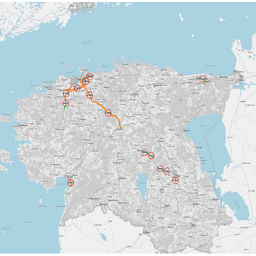Speed limits on Estonian highways are changing. Summer speeds are ending, and winter speed limits are coming into effect. The Transport Administration announced this on Thursday.
On some road sections, the maximum permitted speed is 110 km/h. This applies in good weather and driving conditions. On other roads, such as 2+1 and some 2+2 sections, the speed limit is 100 km/h.
On the Tallinn-Narva road, the Maardu-Haljala section will have a speed limit of 90 km/h in winter. This section has many curves and a high risk of collisions with wild animals.
The Transport Administration advises drivers to be cautious. A speed limit does not always mean a safe speed. It is important to monitor road conditions and choose an appropriate speed.
In winter, it is advisable to avoid overtaking. If overtaking is necessary, it should be noted that it may take more time. On 2+1 roads, overtaking lanes are short, making it dangerous.
On the Tallinn-Pärnu-Ikla, Tallinn-Tartu-Võru-Luhamaa, and Tallinn ring road sections, the speed may be 110 km/h in good weather and 100 km/h at night.
In winter, the speed limit of 110 km/h applies to a total of 250 kilometers of roads, and 100 km/h to 109 kilometers.
Falling temperatures make the roads slippery. Drivers must be cautious and choose an appropriate speed. Winter roads require increased attention.
The Transport Administration recommends checking road conditions on the Tark Tee portal before starting your journey. From December 1st, all vehicles must have winter tires.

